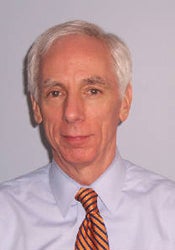 You may have seen the many articles that came out this week on a new peer-reviewed paper in the Journal of Climatic Change by Professor Bob Howarth and others at Cornell. The paper compares the carbon footprints of natural gas and coal and concludes that natural gas contributes to global warming as much as coal, or even more, when assessed on a life-cycle basis.
You may have seen the many articles that came out this week on a new peer-reviewed paper in the Journal of Climatic Change by Professor Bob Howarth and others at Cornell. The paper compares the carbon footprints of natural gas and coal and concludes that natural gas contributes to global warming as much as coal, or even more, when assessed on a life-cycle basis.
Though we have questions about Professor Howarth’s paper’s emissions estimates, it nevertheless highlights the critical importance of obtaining and sharing better data so that we can accurately characterize air pollution from natural gas development — including the short-term climate impacts of methane. Because of methane’s powerful heat-trapping ability during its roughly decade-long atmospheric residence time, or life span, reducing methane emissions from production increases the chances of meeting critical climate targets, such as limiting global warming to a two degree Celsius temperature increase.
Professor Howarth’s research should also help focus attention on the methane leakage issue. EDF has been concerned for some time that methane leakage in the natural gas development process could significantly diminish its inherent low-carbon advantage relative to other fossil fuels. There is consensus that a methane leak rate during production, processing, and transportation of 5% (of total gas production) is the approximate break-even point at which natural gas and coal used to generate electricity have similar climate impacts on a 20-year time horizon. Examining the warming potential of natural gas over a 20-year timeframe is important, rather than the customary 100-year timeframe, given the need to reduce global warming in coming decades. What we don’t fully know is whether the leakage rate today is lower than that break-even point, though the Environmental Protection Agency’s (EPA) most recent assessment estimates the leakage to be between 2 to 3%.
Bottom line: We need better data on methane leakage from natural gas production and transport. The natural gas industry, which touts itself as providing the “low-carbon” fossil fuel, should drop its lawsuits against EPA to require disclosure of its global warming pollution and take aggressive steps to both curb the loss of its product into the atmosphere and maximize the greenhouse gas benefits of natural gas. Numerous cost effective opportunities exist to capture leaking gas and turn it into increased fuel sales. And less natural gas leakage will mean healthier air for communities, since raw natural gas contains both cancer-causing and smog-forming pollutants.
If the industry wants people to trust that natural gas is a clean alternative, it would do well to spend less time fighting pollution disclosure requirements and more time addressing environmental and public health concerns. EDF is eager to work cooperatively with the natural gas industry to accomplish this.










